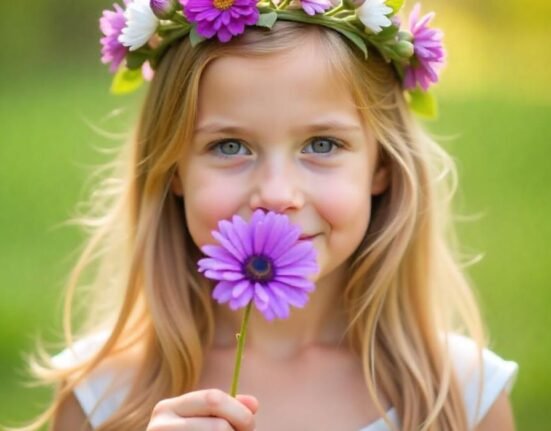Do you Feel like losing interest in activities that you enjoyed once? Facing a tough time managing your sleeping and eating schedule. These symptoms become more evident during the late fall or early winter. Then don’t brush aside these symptoms as a case of winter blues. These symptoms may be related to seasonal affective disorder. But what is seasonal affective disorder, and how does it affect our mood with the changing seasons?
Seasonal affective disorder
Seasonal affective disorder (SAD), also known as seasonal depression, January blues is a psychological disorder where people have normal mental health all over the year but start experiencing depressive symptoms during winter. SAD is of two types, that is Summer depression and Winter depression.
It is more commonly related to the reduction or increase in sunlight hours. Some symptoms include low energy, cravings mainly carbohydrate-rich, and tiredness. Though many people face these symptoms for a shorter period if you’re facing it whenever the seasons change then it may be SAD.
Symptoms of SAD
- The feeling of hopelessness and worthlessness
- Agitation
- Oversleeping
- loss of motivation
- Feeling sad, almost every day
- Having difficulty in concentration
Causes of SAD
Researchers do not fully understand what causes seasonal affective disorder. As not only in humans, but also, many species’ activities are diminished during winter, which leads to a reduction in sunlight hours, which contributes to SAD.
Some research shows that because of fewer sunlight hours, our body starts reducing the amount of Serotonin, which is responsible for regulating mood. The sunlight regulates the normal serotonin levels, but people who are experiencing SAD, have low serotonin levels which in turn affects mood. Another important brain chemical released during SAD is Melatonin.
Melatonin is responsible for maintaining the sleep cycle. When melatonin starts overproduction in humans, the sleep-wake cycle gets disturbed, which causes hypersomnia in people with January blues.
However, sunlight is a major source of Vitamin D so, a deficit of vitamin D can also reduce the serotonin levels. Both Serotonin and melatonin play a crucial role in maintaining normal body rhythms. Individuals experiencing SAD generally have a disruption in this. As a consequence, people have difficulty adjusting to these seasonal changes, leading to changes in mood, sleep, and behavior. One research also shows that reduction in sunlight may disrupt one’s body’s internal clock and cause depression.
What are the risk factors?
According to one report, More than 10 million people suffer from Seasonal affective disorder. It occurs in 0.5 to 3 percent of individuals who suffer from this disorder. The risk of SAD starts during adulthood. Generally, women are more prone to this disorder than men.
Environmental conditions also play a crucial role in it because living in areas where day sunlight is short is also affected by the disorder.
SAD appears to be more common in people who live far away from the equator.
People who have bipolar disorder are also at risk of having seasonal affective disorder. As individuals with bipolar, episodes of mania are also linked to specific reasons. Moreover, people with SAD tend to have other disorders as well like anxiety, ADHD, and eating disorder.
Sometimes SAD is linked with Family history, as people who share blood relations, like relatives with other mental disorders like depression and schizophrenia also have a chance to develop SAD.
Chances of developing suicidal thoughts present with people having SAD. According to one report, around 6-35% of people required hospitalization during the illness.
It’s important to remember that while winter caps can provide physical comfort and a sense of style, addressing seasonal affective disorder (SAD) in children may require a holistic approach, including exposure to natural light, regular exercise, a balanced diet, and open communication with parents or guardians about their feelings and emotions.
How SAD can be treated?
Seasonal affective disorder is not regarded as a separate mental disorder, but it can be an added description with the individuals facing bipolar disorder. Treatments are available for people who are experiencing SAD including light therapy, psychotherapy, antidepressant medications, and vitamin D.
1) Light Therapy
Light therapy, also known as phototherapy has been a central component in the treatment of SAD. In this treatment people with SAD are exposed to bright light to make up for the natural sunshine that might be diminished during the colder and darker months.
In this treatment, people are made to sit in front of a very bright box at 10,000 lux, and commonly made to sit at a distance of 30-60 cm in front of a bright box for 30-45 minutes. This is usually the first thing that the patients do from winter to spring.
The main important characteristic of the bright box is that it is 20 times brighter than ordinary indoor light, filtering out the damaging UV lights. People with eye disease take light therapy under medical supervision only/
2) Psychotherapy
Psychotherapy also known as talk therapy helps people to cope with their difficulties facing everyday lives, psychotherapy is one of the treatments for people with SAD. This therapy is usually conducted in groups, which aims to replace negative thoughts with positive ones and encourage individuals to stay motivated. It also helps people to engage in outdoor activities, and exercise and makes people follow their schedules.
3) Antidepressant medications
Several medications are also given when the case becomes severe. As in SAD, the normal levels of serotonin get disrupted, and antidepressant medication like selective serotonin reuptake inhibitor (SSRI) whenever the symptoms start occurring. Some of the effective antidepressants are fluoxetine, sertraline, and paroxetine. It can enhance patients’ mood. Another effective antidepressant for patients with seasonal affective disorder is Modafinil.
4) Vitamin D
Sunlight plays a major role in SAD and people with a deficiency of vitamin D given nutritional supplements of this vitamin help them to overcome SAD effectively.
How can we prevent SAD?
Since we already know the onset of winter, it becomes easy for people who have a history of SAD can start their treatments before the onset of winter. It will people prevent from depression.
Although psychotherapy and light therapy are quite effective for people with SAD there is no solid evidence that supports that starting these therapies before the start of fall may prevent depression. Antidepressants may help people but they may have higher side effects for them.
Read More Articles:
- Do you hide your Sadness with Smiley Emoji?
- Loneliness: Types, Impact and Strategies for Coping
- The Pathologization of Female Emotions
- Behind the Laughter: Robin Williams













Leave feedback about this